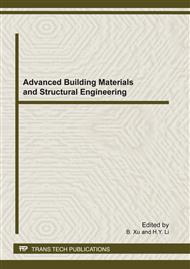p.3
p.7
p.13
p.17
p.21
p.26
p.30
p.35
Effect of Color Shading Nets on Growth and Nutrient Uptake of Flowering Chinese Cabbage
Abstract:
The effect of color shading-nets (red net, blue net and silver net) and ordinary black net on plant growth and nutrient uptake of flowering Chinese cabbage (Brassica campestris L. ssp. chinensis var. utilis Tsen et Lee) were studied, with no net shading as the control. The results indicated that, compared with the control, red net covering increased plant height, leaf area and stem diameter of flowering Chinese cabbage. Red and blue nets covering enhanced the above ground fresh weight, while the silver and black nets covering decreased the above ground fresh weight. Shading net covering significantly improved the nitrogen (N) and potassium (K) content of flowering Chinese cabbage, while it had no significant effect on the phosphorus (P) content. Red and blue nets covering enhanced mineral nutrients uptake, while it was decreased under silver and black nets covering. Red and blue nets covering promoted plant growth and nutrients uptake of flowering Chinese cabbage and could be widely applied in leaf vegetable production.
Info:
Periodical:
Pages:
3-6
Citation:
Online since:
February 2012
Authors:
Keywords:
Price:
Сopyright:
© 2012 Trans Tech Publications Ltd. All Rights Reserved
Share:
Citation:


